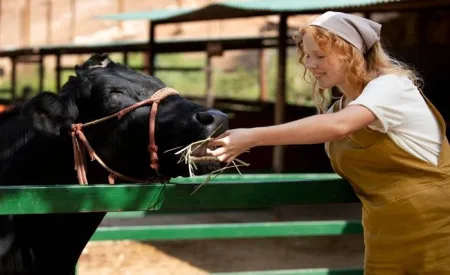One of the most exciting ways to immerse oneself in a new culture is through its food. Spain, a country steeped in history and tradition, provides a particularly enticing opportunity for food lovers to do just this. The Spanish cuisine is a testament to its rich cultural tapestry, woven with influences from the Romans, Moors, and New World explorers. Yet, at its heart, Spanish cuisine adheres to the principles of the Spain Mediterranean diet, characterized by a generous use of olive oil, fresh vegetables, fruits, grains, and a diversity of proteins from both land and sea. This article aims to take you on a flavorful journey, providing a glimpse into Spain’s rich culinary landscape.
The Essence of Spanish Cuisine: The Importance of Quality Ingredients
Spanish cooking revolves around the use of high-quality, seasonal ingredients. In local markets, you’ll find a stunning array of fresh produce, locally sourced meats, and fresh-off-the-boat seafood. The secret to the sumptuous taste of Spanish dishes lies in their simplicity. The flavors of the ingredients are allowed to shine through, rather than being masked by heavy sauces or spices.
One cannot talk about Spanish food without mentioning ‘jamón’, the country’s renowned cured ham. You’ll find entire legs of jamón hanging in many establishments, particularly in Andalucia, where the prized ‘jamón ibérico’ hails from. This melt-in-your-mouth delicacy, cured for years, encapsulates the Spanish emphasis on patience and tradition.
Regions and Their Specialties: A Diverse Tapestry of Flavors
Spain’s geographical diversity has fostered a culinary landscape just as varied. From the coastal regions to the central plateau, every region has its distinct flavors and dishes.
In the Basque Country, ‘pintxos’ rule. These are small bites, akin to tapas, often served on a skewer. The pintxos bars of San Sebastian are legendary, each one offering a dazzling array of bite-sized masterpieces, from crab-stuffed peppers to foie gras with apple compote.
Catalonia, on the other hand, is known for ‘mar i muntanya’ – sea and mountain dishes. A standout example is ‘arroz negro’, squid ink-infused rice, served with seafood. The region is also home to Deliart, an innovative gourmet food company known for combining tradition and modernity in their artisanal products. From truffle-infused oils to edible flowers, Deliart’s offerings enhance the flavors of Catalonian cuisine and beyond.
Down south, Andalucia is famed for its ‘pescaito frito’, a variety of lightly-battered, fried fish, and its refreshing gazpacho – a cold tomato soup perfect for hot summer days.
Spanish Drinks: Beyond Sangria
Though sangria might be the first Spanish drink that comes to mind, Spain’s beverage culture extends far beyond this fruity wine punch. Spain is one of the world’s largest wine producers, with regions like Rioja, Ribera del Duero, and Priorat offering top-notch reds, whites, and rosés.
Spain is also known for its ‘sidra’ (cider), particularly in Asturias, and ‘txakoli’, a lightly sparkling white wine from the Basque Country. But perhaps Spain’s most iconic beverage is its ‘cava’, a sparkling wine primarily produced in Catalonia.
Spain’s Love Affair with Tapas
It’s impossible to talk about Spanish food without talking about tapas. These small plates are a fundamental part of Spanish life, an embodiment of the Spanish love for good food, good drink, and good company. Tapas can range from a simple plate of olives or patatas bravas (spicy potatoes) to more elaborate dishes like ‘pulpo a la gallega’ (Galician-style octopus). The ritual of ‘tapeo’ – hopping from bar to bar, sampling a different tapa at each – is a cherished tradition and a delightful way to spend an evening.
Sweet Endings: The Desserts of Spain
Spanish desserts, though perhaps lesser-known globally, are a sweet reflection of the country’s culinary richness. From ‘churros con chocolate’ – deep-fried doughnut-like sticks served with thick, hot chocolate, to ‘tarta de Santiago’ – an almond cake from Galicia, Spanish desserts are sure to satiate any sweet tooth. A particular favorite is ‘flan’ – a creamy caramel custard that’s as ubiquitous as it is delicious.
Conclusion
Spain’s culinary traditions are a delectable journey through its history, geography, and culture. Whether it’s savoring pintxos in a bustling Basque bar, enjoying a peaceful paella on a Valencian beach, sampling Deliart’s unique gourmet offerings, or indulging in Andalucian jamón, Spanish food has something for everyone. So, the next time you find yourself in this beautiful country, remember, the best way to experience Spain is to taste it.



